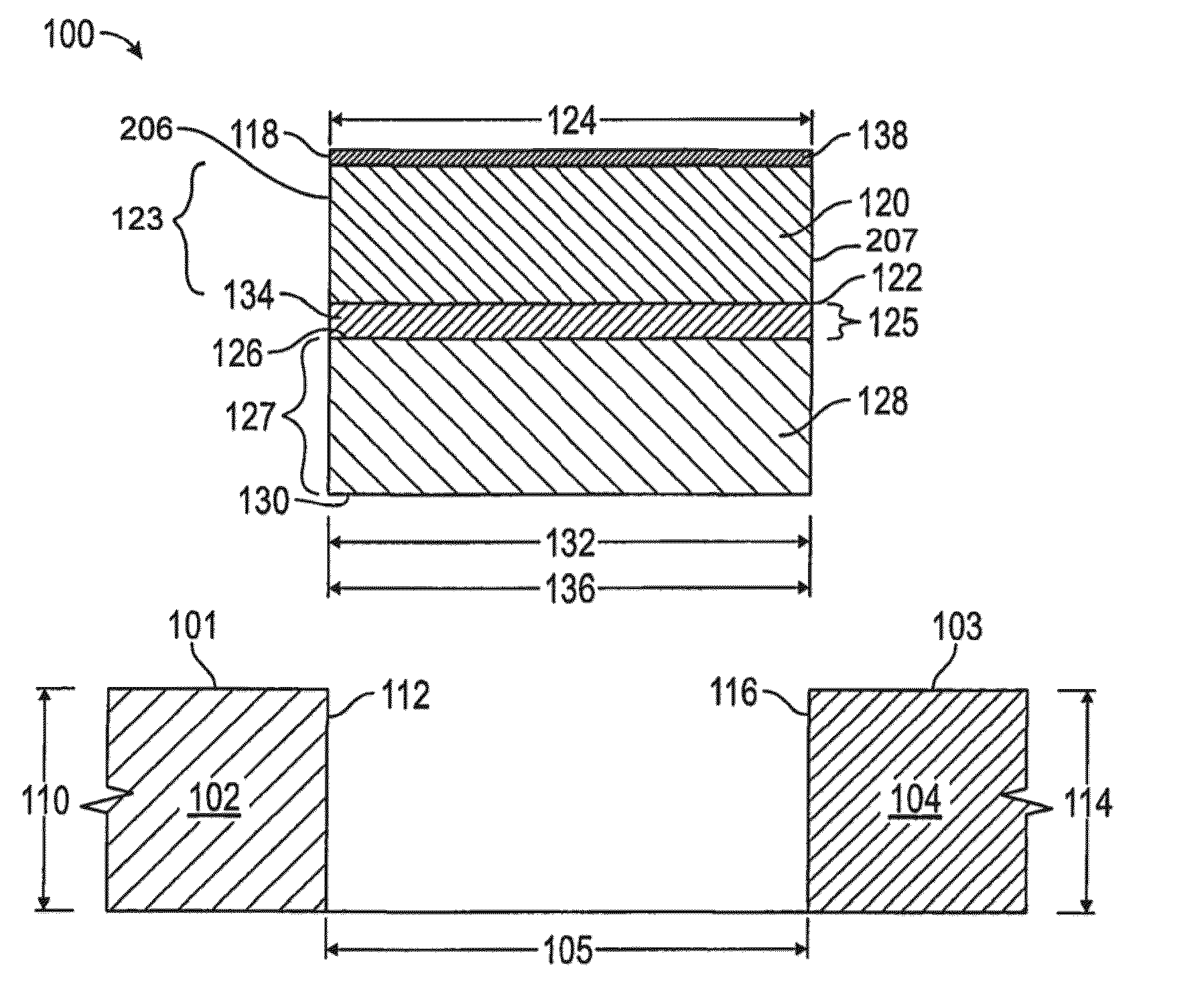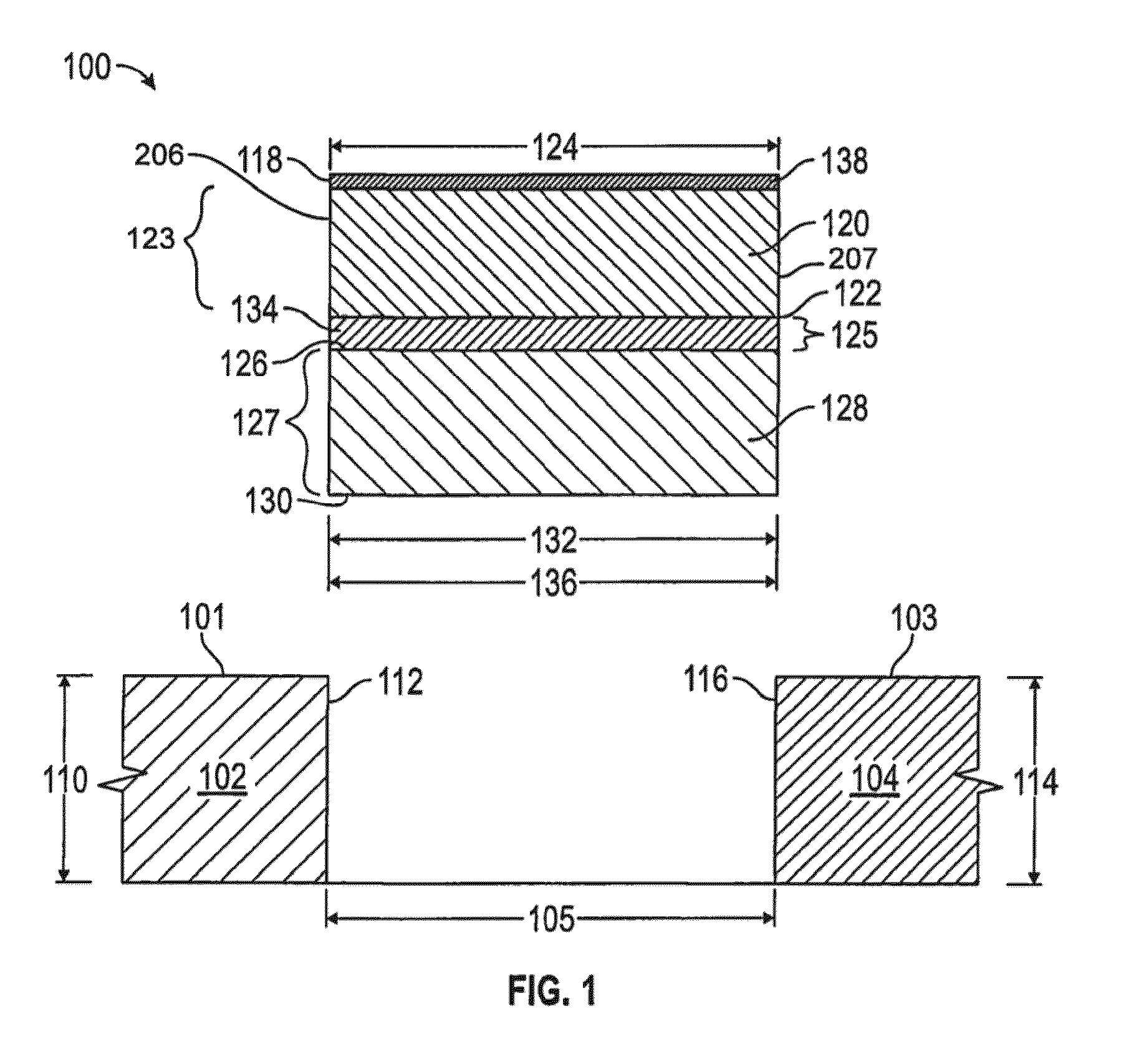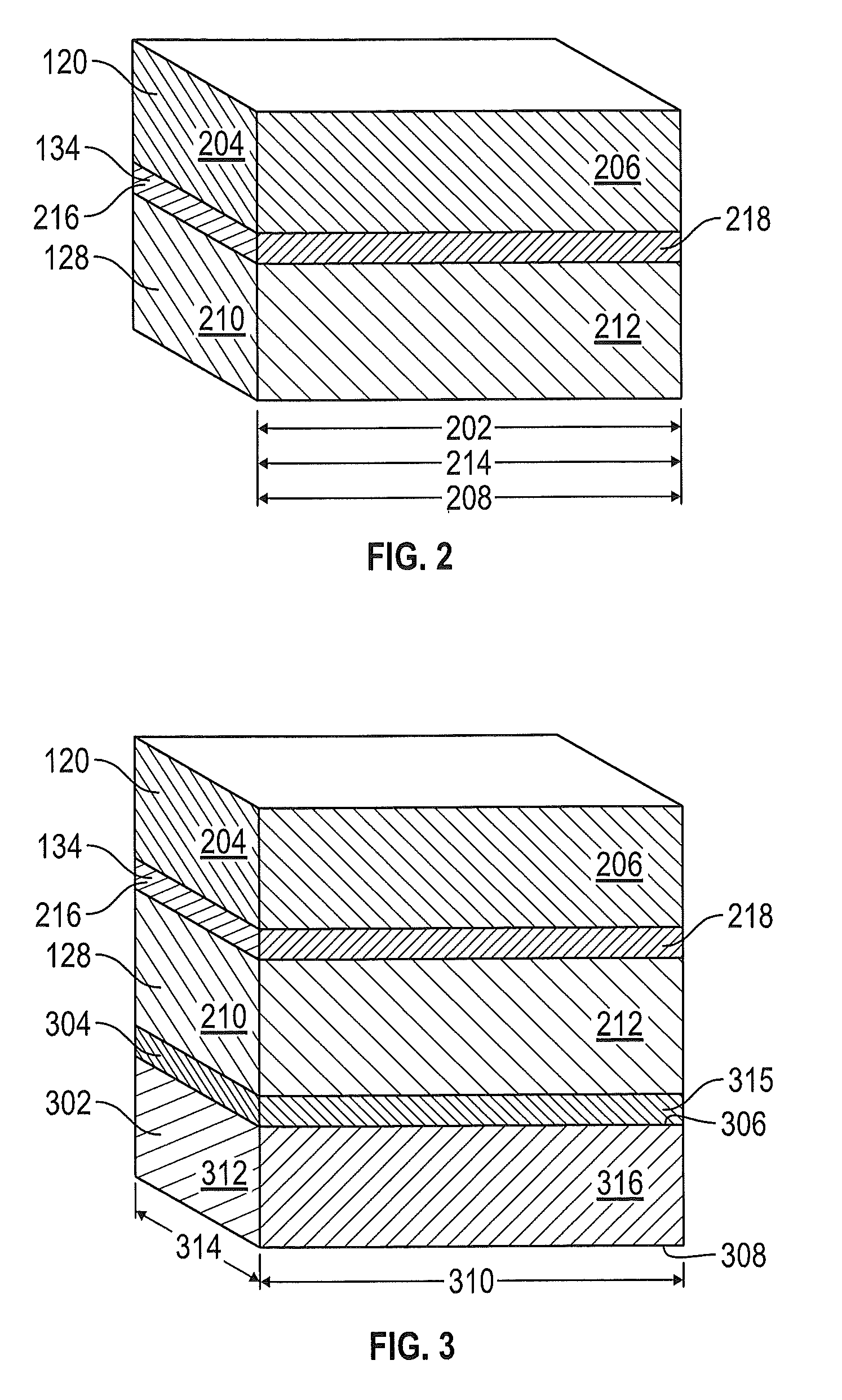Joint seal system
a seal system and joint technology, applied in the field of joint seal systems, can solve the problems of sealing system failure, thick and inflexible seals, and joints that are subject to damage,
- Summary
- Abstract
- Description
- Claims
- Application Information
AI Technical Summary
Benefits of technology
Problems solved by technology
Method used
Image
Examples
first embodiment
[0050]The joint seal 100 may further include an elastomer 138, such as silicone, adhered to the first body top 118 and / or to the bottom of the bottom-most layer, the second body bottom 130 in the
[0051]Referring now to FIG. 3, in another embodiment, the joint seal 100 may further include a third body of compressible foam 302 and a second barrier 304. In this embodiment, the third body of compressible foam 302 includes a third body top 306, a third body bottom 308, a third body length 310, a third body first end 312, a third body width 314, and a third body first side 316. The first body length 202 and the third body length 310 are equivalent, and the first body width 124 and the third body width 314 are equivalent. In this embodiment, the second barrier 304 is adhered to the second body of compressible foam 128 at the second body bottom 130 and is adhered to the third body of compressible foam 302 at the third body top 306. The second barrier 304 would include a layer of a heat barri...
embodiment 400
[0057]Referring now to FIG. 4, in an alternative embodiment 400, the joint seal includes a first body of compressible foam 120, a second body of compressible foam 128, and a barrier 134 adhered to both the first body of compressible foam 120 and the second body of compressible foam 128, wherein the compressible bodies have equivalent lengths and widths but the barrier extends beyond the edge of the first body of compressible foam 120 on at least one side to provide a wing 402 can be turned up (or down) and adhered, at installation, to the substrate 102, 104. Additionally, a slow drying adhesive may be applied to the wing 402 before insertion. Traditional, faster drying adhesive, such as epoxy, are to be avoided as they can cure before insertion.
[0058]This embodiment allows the barrier 134 to extend past the compressible body laminations and be used as wing 402 to be set into the concrete substrate 102 or polymer nosing 804, as illustrated in FIG. 8. This is helpful for split face co...
embodiment 700
[0061]Referring now to FIG. 7, in another further alternative embodiment 700, the barrier 134 may be of a narrower width than the first body 120 and the second body 128. Thus, the barrier 134 may terminate short of the edge of the first body 120 and the second body 128. This variation allows for the benefit of the different foams for the first body 120 and the second body 128 and also allows for the barrier 134 to accept less compression while still providing its intended properties.
[0062]In connection with each embodiment, cutting the first body 120 and the second body 128 into interlocking (male / female) sections using a radius of at least 0.1875 inches permits a thicker barrier 134 to be used without bowing or deformation of the foam, a benefit previously available only when a thin barrier 134 might be used. In the prior art, use of a random accordion style would cause the barrier 134 to fatigue after cycling.
[0063]An example is a joint seal using two different fire-rated foams as...
PUM
| Property | Measurement | Unit |
|---|---|---|
| Distance | aaaaa | aaaaa |
| Length | aaaaa | aaaaa |
| Thickness | aaaaa | aaaaa |
Abstract
Description
Claims
Application Information
 Login to View More
Login to View More - R&D
- Intellectual Property
- Life Sciences
- Materials
- Tech Scout
- Unparalleled Data Quality
- Higher Quality Content
- 60% Fewer Hallucinations
Browse by: Latest US Patents, China's latest patents, Technical Efficacy Thesaurus, Application Domain, Technology Topic, Popular Technical Reports.
© 2025 PatSnap. All rights reserved.Legal|Privacy policy|Modern Slavery Act Transparency Statement|Sitemap|About US| Contact US: help@patsnap.com



